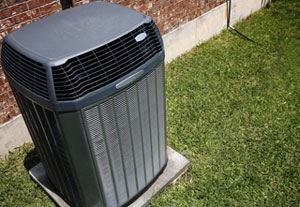Residents of Oklahoma don't experience the highest humidity in the lower 48, but moisture levels can be high enough in our homes to make us uncomfortable. Sometimes, homes may have conditions that can lead to higher humidity, where mold, mildew, fungus, other attendant bad smells, and deterioration of drywall become a problem. There are high-tech and low-tech solutions to lower humidity. Let's take a look at a few of them.
Whole-Home Dehumidifier
The whole-home dehumidifier is your best solution for lowering humidity. This dehumidifier is installed in the HVAC and helps remove moisture from the home's air and then exhaust it through the plumbing. This is likely to be the most expensive solution, but it's also the most effective.
You can also try portable dehumidifiers, but in most cases, these don't work as effectively as whole-home types, and they have to be moved around, emptied, and cleaned.
HVAC System
Your home's HVAC system is the most common tool you can use to lower humidity. If the system is working like it should, it removes moisture in the form of condensation on the coils, then sends it through a condensate drain to the outdoors. This system works best when you have a clean air filter; a dirty filter impedes airflow, keeping the system from removing moisture effectively. Coils should also be clean if you want to effectively lower humidity.
Air ducts should also be connected and without breaches that allow humid air in.
Keep Moisture Out
Keep moisture out of your home by closing doors and windows. If you have ceiling leaks or leaking plumbing, get the leaks fixed. Also, follow these tips:
Refrain from using moisture-producing appliances, such as the dishwasher and the laundry machines, so often.
Don't cook when you can avoid it, instead using the microwave.
Keep plants shut up in one room.
Use Exhaust Ventilation
You can limit running excessive water by taking shorter showers, but also look into exhaust ventilation to the outdoors in the kitchen and the bathrooms. The ventilation should not go to the attic, where it will just trap moisture.
For more on how to lower humidity, contact Air Assurance of Broken Arrow.











